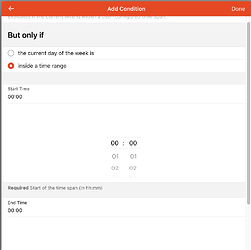That’s the Link which @Udo_Hartmann didn’t list.
Specific and actionable issues are the best way to do this. “This section isn’t clear, make it better” really isn’t actionable though so be prepared to come with concrete suggestions.
We’ve done the best that we can with the docs and tutorials. “Do better” without details on how is kind of an FU to those who have contributed up to this point.
Just to be clear. OH could be made very easy for some smallish subset of users. But if your requirements fall outside that subset ![]()
OH as an organization cannot sell preconfigured hardware like that. I imagine some third party could do so if they wanted but care would have to be taken with the trademarks.
openHABian is our answer to a “preconfigured” system.
Expect some pushback on this.
Please elaborate.
There have been some examples of using a state machine in OH rules. A State Machine Primer with HABlladin, the openHAB Genie is old but still shows the overall approach.
I’ve on my long list of todos to create a rule template to implement a generic state machine. I’m not yet convinced it will make it simpler though.
As for the time window part, in UI rules the “But only if…” section of the rule was made for this. You can define a time range there fairly easily now:
In just text based rules or in a Script Action both JS Scripting and jRuby make time comparisons somewhat easier. For example:
if(time.toZDT().isBetweenTimes("08:00", "22:00")) {
The reason Hue can be that simple is because they only have to worry about Hue as a technology. Homey is that simple because it is limited to only a hand full of technologies, all of which can be auto discovered.
OH has no such limitations.
And there is an issue to figure out how to have OH discover what can be discovered during the first run wizard too.
This is why the semantic model exists. Could it be better? Yes, but when you add semantic tags to your Items you get a UI for free.
Because they want support for a technology that Hue and Homey doesn’t support or they want to do things that Hue and Homey can’t do.
I keep seeing this stated as if that isn’t what the developers are already doing.
